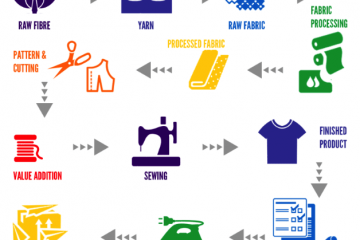Wavy, Uneven, or Buckled Zippers After Sewing – 5 Common Causes and the Optimal Zipper Pre-Expansion Solution
19/06/2025
In the garment industry, wavy, uneven, or buckled zippers after sewing are common issues—especially in high-precision products such as jackets, dresses, and sportswear. These problems negatively affect product aesthetics and quality, leading to higher costs due to rework or defects.
So, what causes these zipper issues? And how can manufacturers effectively and permanently fix wavy zippers? In this article, Hoshima outlines the 5 most common causes and presents the most reliable solution: zipper pre-expansion using a zipper heat press machine.
1. Zippers Were Not Pre-Expanded Before Sewing
Cause:
Zippers—especially plastic or polyester-core types—are prone to shrinking or warping due to temperature, humidity, or production conditions. If they are not pre-expanded before sewing, they may shrink or distort during later heat exposure, causing wavy or buckled seams.
Solution:
Use a zipper pre-expansion machine (zipper heat press machine) to flatten and stabilize the zipper before sewing. This crucial step prevents shrinkage and deformation, ensuring the zipper remains straight after being sewn.
2. Mismatch Between Fabric Stretch and Zipper Rigidity
Cause:
When attaching zippers to stretchy materials like spandex or polyester, the difference in elasticity between the fabric and the zipper can cause uneven tension. The result is wavy or puckered zippers.
Solution:
-
Choose zippers with flexibility suited to the fabric.
-
Use stabilizing tapes or adhesive interlinings to secure fabric edges.
3. Uneven Stitching or Improper Sewing Technique
Cause:
Incorrect sewing methods—such as inconsistent thread tension, excessive pulling, or using unsuitable presser feet—can distort the zipper during stitching. This often results in crooked, wavy, or raised zippers.
Solution:
-
Use a presser foot designed for zipper sewing.
-
Control manual tension and machine speed during operation.
4. Misalignment with Fabric Grainline
Cause:
Sewing a zipper onto fabric that is cut on the bias or across high-stretch zones can cause the fabric to warp after ironing or washing—leading to misaligned or twisted zipper tracks.
Solution:
-
Align fabric along the vertical grainline when inserting zippers.
-
Reinforce edges with interfacing or non-woven backing.
5. Inappropriate Heat Pressing After Sewing
Cause:
Pressing the zipper with an industrial iron after sewing—especially at high heat or while stretching the material—can lead to zipper shrinkage or warping.
Solution:
-
Adjust post-sewing heat settings based on zipper and fabric type.
-
Avoid pressing directly on the zipper surface; use a protective layer.
Complete Zipper Pre-Expansion Solution:
Zipper Pre-Expansion Machine (Zipper Heat Press)
Key Benefits:
-
Stabilizes zipper length and shape before sewing.
-
Increases production speed and reduces human error.
-
Minimizes defects such as wavy, uneven, or puckered zippers.
-
Fully adjustable heat and speed settings to match zipper types (plastic, metal, polyester, etc.).
👉 Learn more about our LS-4241A Zipper Pre-Expansion Machine
Conclusion
If your production frequently faces issues like wavy or uneven zippers after sewing, investing in a zipper pre-expansion machine (also known as a zipper heat press) is a strategic move. This solution ensures higher quality output, lower error rates, and more efficient sewing lines.
Contact us for a consultation or to schedule a machine demo at our showroom:
-
Phone: (+84) 0983 309 910 (WhatsApp, WeChat, Zalo)
-
Email: marketing@hoshima-int.com
-
LinkedIn | Facebook | YouTube: Hoshima International


